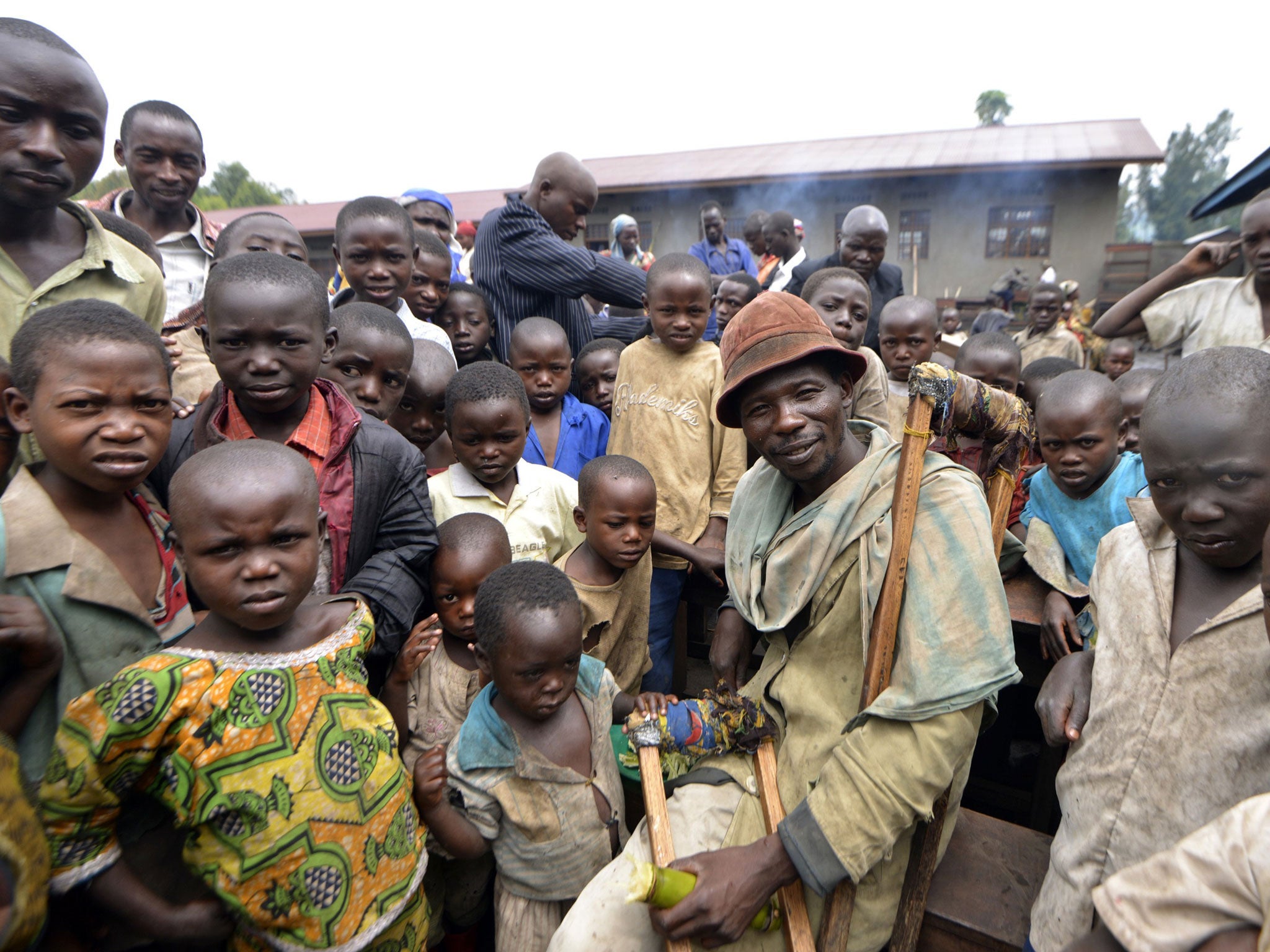‘It’s a new Congo, we won’t bow down to the enemy again’: Optimism as DRC's vanquished rebels sign up for peace
The country's spectacular turnaround has surprised even the most knowledgeable of DRC observers and analysts

Five times, Majoro Sebageni had to climb a steep, muddy slope on Chanzu Hill in eastern Democratic Republic of Congo, to dig battle trenches for the M23 rebels. The 24-year-old student says rebels would accost him as he made his way to university and force him to spend a few days labouring for them. Majoro knew better than to refuse.
Sebageni says three of his friends “disappeared” over the course of the 15-month occupation of the Rutshuru territory in eastern DRC by the M23 movement, a mainly ethnic-Tutsi force who mutinied from the Congolese army in 2012. He says they were sent to Rumangabo – the rebels’ headquarters – and like many others, they are believed to have been hanged and ditched in a corn field.
“I want the world to know what we went through so they can help us to move on,” Sebageni says. Last night, the M23 were expected to sign a peace deal with the government after they were defeated in a two-week assault by the Congolese army and UN peace-keeping force.
It has been a spectacular turnaround that surprised even the most knowledgeable of DRC observers and analysts. Almost a year ago, the M23 rebels seemed unstoppable as they seized Goma, the strategic economic hub on the shore of Lake Kivu. Fleeing in the face of the rebel advance, the army was at that time a wretched force, infamous for its human rights violations.
Humiliated and forced to negotiate with the rebels as a condition for their withdrawal from Goma last November, the government has since purged the military command and installed loyal, better-trained officers. The army units that defeated the rebels are the result.
Colonel Mamadou Ndala, who leads the 42nd commando battalion, epitomises that new guard. To locals, he is “Mamadou”, a hero whose name is chanted as he walks into liberated villages.
“This is a new Congo, you will see,” he says. “We won’t bow down to the enemy as [we did] in the past.”
The UN peacekeeping force in DRC has also played a vital role. In November 2012, as Goma fell, members of the force merely stood by, watching as the rebels marched in town, because they were not allowed to intervene. The failure shocked the international community into action. A special unit was created in March 2013 – the Foreign Intervention Brigade (FIB) – and it was given a mandate to proactively engage armed groups. As the last of the M23 became cornered on the Ugandan border last week, the FIB pounded the rebels’ last bastion, creating a breach for the army to storm in, sending the rebels fleeing across the border.
Although the M23 is defeated, important questions remain about whether their political grievances will be addressed to try to put the country on a path to peace.
“Regardless how justified or true M23’s claims of representing the community of so-called ‘Congolese Tutsi’ were – it remains that land and identity issues, representation and protection of communities must urgently be addressed by the Congolese government,” said Christoph Vogel, a DRC analyst.
Optimism is, however, the mood of the hour, as people is former M23-territories reconnect with the outside world.
“I didn’t have to sleep with my shoes on last night,” said Sebageni.
“You know, I didn’t have to be prepared for the worst.”
Conflict resolution: Violence and peace deals
1998-2003 DRC was at the centre of a five-year conflict – the latest in a history of violence – which pitted government forces, supported by Angola, Namibia and Zimbabwe, against rebels backed by Uganda and Rwanda. Millions of people died. In spite of a peace deal in 2003, the east remained a conflict zone.
2008 Clashes between rebels and government forces resume. Congolese government accuses Rwanda of backing ethnic Tutsi rebel commander Laurent Nkunda. Rwanda denies this.
2010 Reports of mass rapes in North Kivu province, perpetrated by both rebels and army.
2012 A few hundred soldiers, mainly Tutsi, desert the army in April to form the M23 rebels. At the height of its strength, it had around 5,500 fighters. A UN panel said Rwanda and Uganda supplied the M23 with weapons. Both denied the claims. In November, the M23 marched into Goma as UN peacekeeping troops watched. They later withdrew, after the release some of their members.
2013 A 3,000-member UN Intervention Brigade was deployed to fight the M23. In November, the army captures a series of strongholds in the east, and the rebel group finally declares an end to its 20-month insurgency.
Subscribe to Independent Premium to bookmark this article
Want to bookmark your favourite articles and stories to read or reference later? Start your Independent Premium subscription today.

Join our commenting forum
Join thought-provoking conversations, follow other Independent readers and see their replies